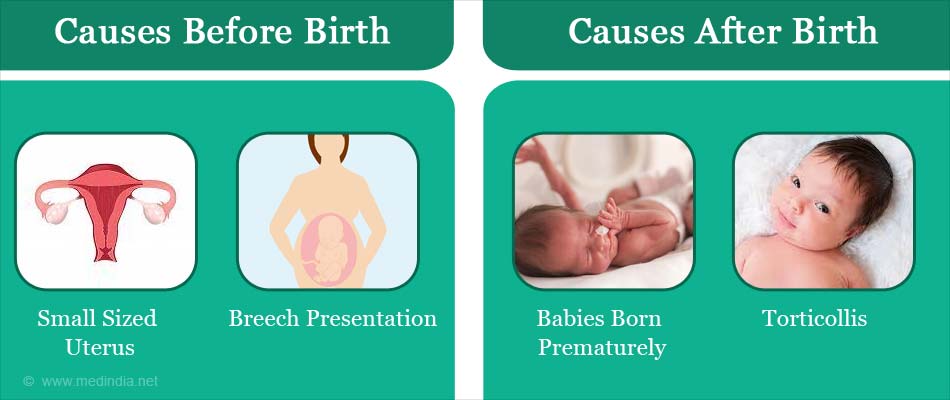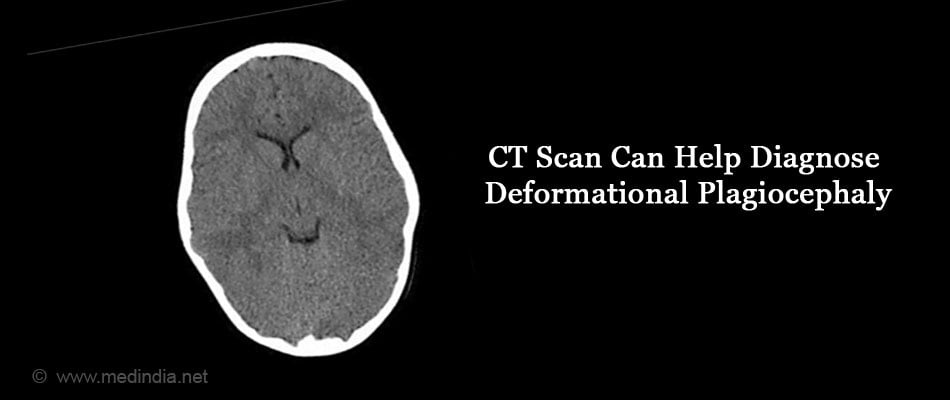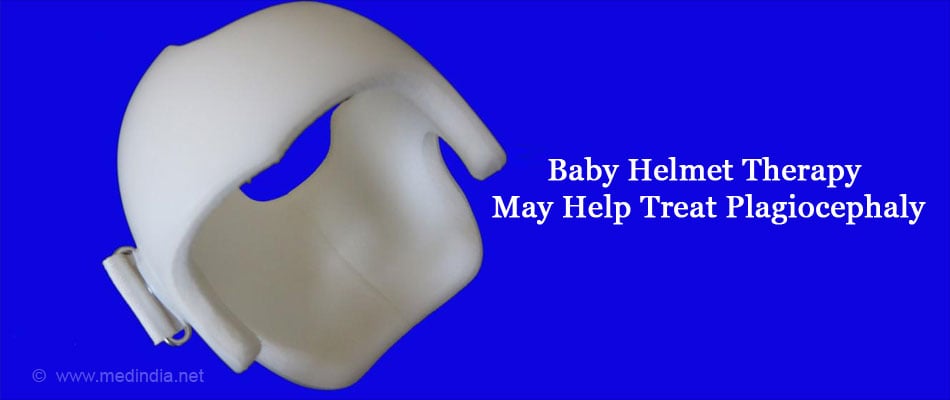- Relationship between starting age of cranial-remolding-orthosis therapy and effectiveness of treatment in children with deformational plagiocephaly. - (https://www.ncbi.nlm.nih.gov/pubmed/28484866)
- Deformational Plagiocephaly - (http://www.stanfordchildrens.org/en/topic/default?id=deformational-plagiocephaly-90-p01834)
- Head Orthosis Therapy in Positional Plagiocephaly: Influence of Age and Severity of Asymmetry on Effect and Duration of Therapy. - (https://www.ncbi.nlm.nih.gov/pubmed/28746283)
- [Efficacy of sleep position correction for treating infants with positional plagiocephaly] - (https://www.ncbi.nlm.nih.gov/pubmed/28606238)
- Facts about Craniosynostosis - (https://www.cdc.gov/ncbddd/birthdefects/craniosynostosis.html)
- Plagiocephaly - (https://www.cincinnatichildrens.org/health/p/plagiocephaly)
- Deformational Plagiocephaly (Flat Head Syndrome) - (https://www.gillettechildrens.org/conditions-care/deformational-plagiocephaly-flat-head-syndrome)
What is Plagiocephaly?
Plagiocephaly, (sometimes called deformational plagiocephaly or positional plagiocephaly and also known as “flat head syndrome”), is a condition in which a baby’s head has an uneven or irregular shape. There may be a flat spot on the back, front or one side of the head. Plagiocephaly is the most common craniofacial problem in babies today.
Plagio means “slanting or oblique” and cephaly means “relating to head”. Plagiocephaly means slanting or flattening of the head. Plagiocephaly can occur while a baby is still growing in the womb or develop after birth.
The baby’s skull is usually soft and oval in shape. Repeated pressure on one part of the head like when the baby is lying on the back for long periods of time, sleeping regularly in one position, being or being strapped for a long time in strollers or car seats can cause misshaping of the skull. This condition occurs more often in premature infants whose skull bones are especially pliable.
The American Academy of Pediatrics (AAP) in 1992 recommended placing infants on their backs to sleep. This led to a dramatic reduction in cases of sudden infant death syndrome (SIDS). However, flat head syndrome became more common as babies were spending more time on their backs, in one position.
Plagiocephaly does not affect the development of a baby's brain, but may affect the physical appearance by causing uneven growth of their face and head.
Plagiocephaly is different from craniosynostosis which can be confirmed by a craniofacial plastic surgeon or a neurosurgeon. Craniosynostosis involves more serious malformations of the skull bones and usually requires surgery.
What are the Types of Plagiocephaly?
Plagiocephaly can be divided into two groups:
- Non synostotic plagiocephaly- is also known as deformational or positional plagiocephaly. It is most common and caused by unvaried sleep position.
- Synostotic plagiocephaly- is caused by premature fusion of bones in a baby’s skull which creates an abnormal head shape.
What are the Causes of Plagiocephaly?
Plagiocephaly can develop before birth in the mother’s womb or after birth.
Causes before birth:
- Small sized uterus.
- Multiple pregnancies – may cause cramped conditions in the womb which can lead to a flattened head. Also babies may develop tight neck muscles on one side of the neck [torticollis].
- Unusual fetal positioning inside the uterus as in breech presentation.
- Large sized babies.
- Unusual pressure placed on the baby's skull by the mother's pelvis.
Causes after birth:
- Baby’s sleep position- is the most common cause of a flattened head. This happens if a baby lies with its head in the same position for a long time.
- Placing babies for a long time in infant car seats, carriers, and strollers.
- Babies born prematurely are more likely to have a flattened head as their skulls are softer than those of full-term babies. They also spend a lot of time on their backs without being moved or picked up.
- Tightness of neck muscle [torticollis] - can limit a baby’s ability to turn toward the affected shoulder. This causes them to consistently hold their head in one position. Over time, this can flatten one side of the head.

What are the Signs and Symptoms of Plagiocephaly?
- A flattened spot at the back or side of the head. There is usually less hair on that part of the baby's head.
- Bulging soft spot [fontanelles] on newborn‘s skull in congenital plagiocephaly.
- Head tilted to one side.
What are the Complications of Plagiocephaly?
- Contracture of neck muscles.
- Facial asymmetry, misaligned ears, bulging forehead.
- Speech clarity problems in congenital craniosynostosis.
How do you Diagnose Plagiocephaly?
- A clinical examination is sufficient to make a diagnosis. By simply looking at a child’s head a doctor can make the diagnosis. Usually for positional plagiocephaly there is no need to order X- rays or other laboratory tests.
- X-rays or a CT scan- to check for fused sutures or ridges along sutures and if the doctor suspects craniosynostosis or another similar condition.

How do you Treat Plagiocephaly?
- Change the head position while baby sleeps from flattened area to a non-flattened portion of head.
- Reduce the amount of time the child spends lying on the back or where the head is resting against a flat surface such as in car seats and strollers. Hold the baby more often.
- Practice tummy time. Make baby lie on the stomach while awake during the day and engage baby in various playful activities. This will also help babies strengthen their neck muscles. Studies have shown that head shape spontaneously improves after the first 6 months.
- Wearing baby helmet in cases where repositioning of head for 2-3 months does not help. This can also benefit some kids with severe torticollis. Considering the spontaneous natural resolution effect, 5 months of age is the optimal period to start cranial remolding therapy.

- Wearing DOC band- which is a smaller, lighter version of the traditional cranial remolding helmet. Each DOC Band is custom manufactured and weighs less than 6 ounces. It consists of an outer plastic shell with a foam lining. The DOC band is open at the top, making contact with your baby’s skull only in the areas necessary to help adjust the cranial shape.
- Exercises- by a pediatric physical therapist are especially beneficial in infants who are born with torticollis.
- The Plagio cradle- developed at Boston Children's hospital is used to both reduce and prevent flattening of head in infants whose age is 3 months or less. The Plagio cradle is placed under a baby's head when lying on the back. It supports the neck and creates a hollowed space that gradually reshapes the baby’s head, allowing it to grow correctly over time.
How do you Prevent Plagiocephaly?
- Change the sleeping position if baby has a tendency to sleep on the flattened head side.
- Choose different activities such as crawling, rolling, pushing, pulling, holding and grasping for baby to play.
- When awake, find ways for baby to play and move on their tummy several times daily. Also cuddling, carrying and making baby sit on lap reduces pressure on the baby’s skull and also helps in bonding with baby.
- Avoid strapping babies for long periods in infant seats or car seats.







